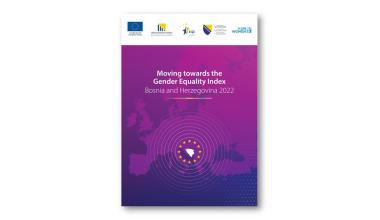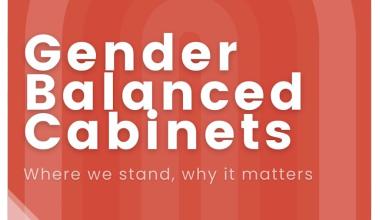Women's Leadership
Main navigation
Countries all throughout the world struggle with providing equal opportunities and positions in regards to women when compared to their male counterparts (Brennan & Elkink, 2015). The People’s Republic of China is not an exception to this trend. In order to combat gender inequality in politics, a quota for women cadres was introduced in 1995. This would ensure that at least one woman holds a head or deputy position in regional governments (Jiang et al, 2023). Despite this quota, women in China still struggle to participate in politics. This statement will be supported by these following arguments; (1) The society and culture in China view women as subordinate, thus lacking support and belief in women when in leadership and political positions, (2) The few women that do end up in positions in government struggle to receive prestigious promotions compared to their male counterparts; and finally (3) In order to attain these promotions these women need to outperform and display similar characteristics to their male colleagues in order to attain similar positions. This issue is important to understand in order to see whether mere gender quotas are sufficient in solving gender inequality in politics or are there other factors we as a society must willingly work to fix.
Click here to read the full article published by Modern Diplomacy on 6 February 2024.
Image source: Modern Diplomacy
Women’s underrepresentation at all levels of government is a persistent problem in the United States. RepresentWomen’s research shows that although we have made progress towards parity, this progress is slow and inconsistent, meaning we are unlikely to reach gender balance within our lifetimes. Increasing and sustaining women’s leadership in elected office requires us to remove the barriers women candidates and legislators face. This drives our research at RepresentWomen to identify the barriers and system-level solutions we can implement to create a more representative, gender-balanced democracy.
Click here to read the full article published by LA Progressive on 22 November 2023.
The Gender Equality Index developed by the European Institute for Gender Equality (EIGE) in 2013, is recognised in the European Union as an important tool for analysing the state of gender equality in a society as well as comparing current trends and the current situation at the European Union (EU) level. Since 2016, the Agency for Gender Equality of Bosnia and Herzegovina within the Ministry of Human Rights and Refugees of Bosnia and Herzegovina together with the Agency for Statistics of Bosnia and Herzegovina have been engaged in activities that have led to the development of a Gender Equality Index for Bosnia and Herzegovina. The Gender Equality Index for Bosnia and Herzegovina 2022 presents the full index scores for two full domains, Knowledge and Power and the partial index scores for the domains of Work and Health. With the development of this report, Bosnia and Herzegovina will for the first time be able to rely on a statistically legitimate, objective and up-to-date statistical tool for the comparison of the state of gender equality in the country wth countries in the region and in the EU. The combined efforts of the Agency for Statistics of Bosnia and Herzegovina and the Agency for Gender Equality of Bosnia and Herzegovina within the Ministry for Human Rights and Refugees of Bosnia and Herzegovina, under the invaluable guidance of EIGE and supported by UN Women and financed by the European Union, have resulted in the development of this Gender Equality Index.
Click here to access the report.
Across Kenya, local conflicts driven by diverse factors have one thing in common: they’re increasingly being mediated by women. From ethnic tensions to land disputes, some of these conflicts stretch back decades; remaining unresolved despite the lasting instability and violence they create among communities. So women are stepping up to end longstanding strife through local dialogues and outreach, approaches male-dominated leadership has not always been willing to take. But in order to build lasting peace, they need support from both their communities and the state—which some are receiving, and many are not.
Old conflicts, new harm
In the country’s western region, longstanding tensions are driving new security risks in the neighbouring counties of Kisumu and Nandi. Their predominant ethnicities mirror the tribal background of the two leading presidential candidates in this year’s election, and the border region has been identified as a hotspot for elections-related violence.
Click here to read the full article published by UN Women on 24 October 2022.
After national news coverage of a COVID-19 mask requirement controversy in Dodge City, Kansas in December of 2020, Mayor Joyce Warshaw received numerous threats such as “Burn in hell”; “Get murdered”; and “We’re coming for you.” Fifteen days later, Mayor Warshaw resigned saying that she and her family no longer felt safe.
Four important questions arise from the circumstances in which Mayor Warshaw and other mayors find themselves.
- How prevalent is violence against mayors from the public?
- Are there gender and race-based differences in violent experiences of mayors?
- Is the violence experienced by mayors causing them to rethink their service?
- What are the wider implications to representation of exposing public servants to abuse and violence? Will fewer people, especially women and women of color run, for and stay in office?
This research seeks answers to these questions.
Click here to access the report.
More than 100 years after women gained full citizenship rights through the 19th Amendment, women are still under-represented in government. While it is widely known that no woman has become president, it is not only the highest executive offices where women have not had access: women also face barriers at the state level.
Even in 2022, the vast majority of state cabinets are dominated by men. Cabinet members hold a vital position of power: running state agencies and serving as trusted advisors to the governor, helping them make important decisions. In nearly all states, most, if not all, cabinet members are appointed by the governor.
Click here to access the report.





